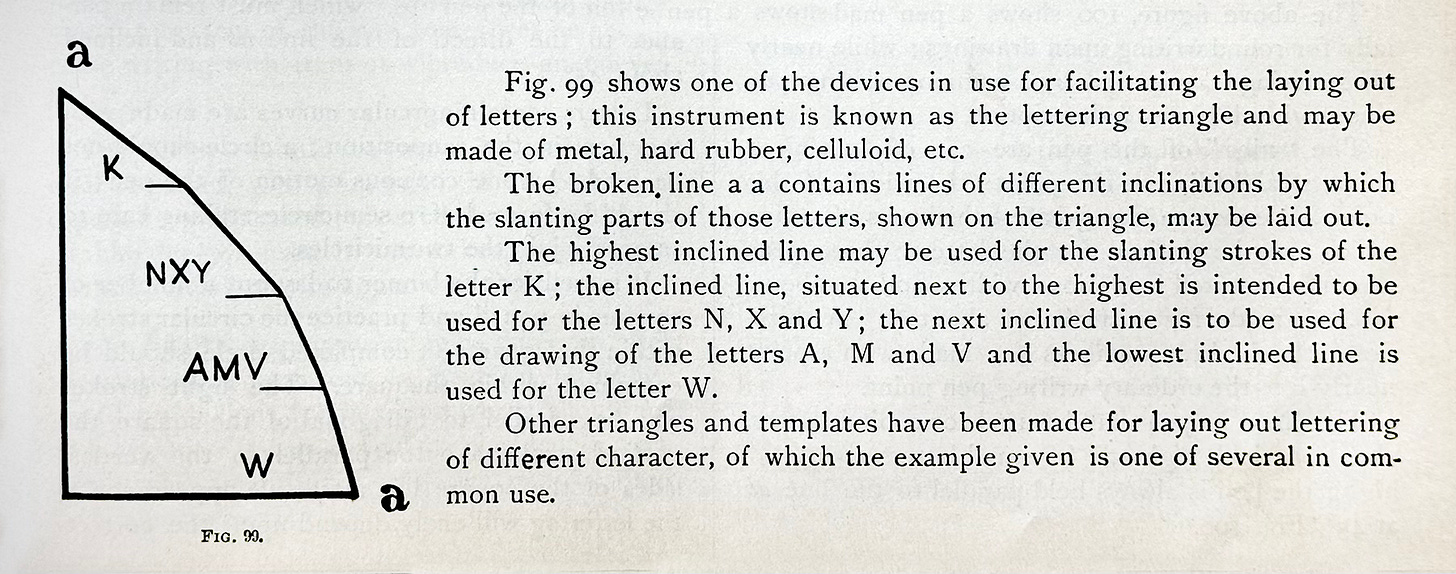Over the decades, many gadgets, such as writing templates, stencils, and tracing guides, have been developed to help take the guesswork out of creating letterforms. I recently stumbled across one of the simplest yet most peculiar letter-making tools in Rogers’ Mechanical Drawing and Design, first published in 1913.
Primarily a drafting manual for engineers, the meticulously illustrated book also includes a section on lettering for technical drawings and diagrams. While the instructions are a bit on-the-nose (for instance, “For titles of larger drawings, where comparatively large lettering is required, it will be most appropriate to use large letters”—really?!), it does feature an interesting device called a 'lettering triangle.’
The tool is intended to help users create consistent slopes for uppercase diagonal strokes. Although students in my lettering workshops know that I’m an advocate of the highly technical method of “eyeballing,” I decided to give this curious instrument a try.
The triangle worked okay, but as often happens with such devices, the forms still required numerous optical adjustments. However, with a little practice, artists can develop the skills to create letters more quickly and easily by drawing them freehand.
If you want to learn essential techniques for creating a range of letter styles without relying on special gadgets, check out my lettering workshop recordings. For info on upcoming classes, lettering history, and interesting tidbits like this, sign up for my newsletter!
Happy lettering!
Ken







